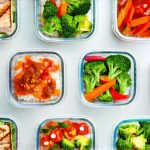The holidays are a time for joy, connection, and – let’s be honest – indulging in delicious food! For many, this includes rich meals filled with festive favorites. However, if you live with a urological condition such as interstitial cystitis (IC), overactive bladder (OAB), or kidney stones, navigating the holiday feast can feel more like an obstacle course than a celebration. Dietary choices significantly impact urologic health, and seemingly harmless treats can sometimes trigger uncomfortable symptoms. This article aims to provide practical guidance on planning holiday meals that allow you to enjoy the season without compromising your well-being. It’s about finding balance – savoring the festivities while being mindful of what fuels (or potentially irritates) your body.
The key isn’t deprivation, but rather informed choices and thoughtful substitutions. We will explore how to modify traditional recipes, identify potential triggers, and build a holiday menu that supports urologic health. It’s important to remember everyone responds differently to foods; what bothers one person may not affect another. This guide offers general recommendations, but personalizing your plan based on your own sensitivities is crucial. Ultimately, the goal is to participate fully in holiday gatherings without anxiety or discomfort, creating happy memories centered around food and family.
Navigating Traditional Holiday Foods
Many classic holiday dishes contain ingredients known to potentially irritate the bladder or kidneys. Consider cranberry sauce – while seemingly innocuous, it can be high in acidity. Spicy eggnog might exacerbate IC symptoms for some. Roasted nuts are generally healthy but can contribute to dehydration if not balanced with adequate fluid intake. Even seemingly safe options like mashed potatoes can become problematic depending on added ingredients such as dairy or garlic. **Understanding these potential pitfalls is the first step toward a urology-safe holiday meal.** If you’re looking for more detailed planning, consider exploring building a urology-friendly meal routine to help stay on track.
The challenge lies in finding ways to enjoy traditional flavors without triggering symptoms. This often involves swapping out irritants for gentler alternatives. For example, using pear juice instead of cranberry juice in a compote, opting for vanilla eggnog (and limiting portion size) over spicy variations, or choosing almonds over heavily salted cashews. Mindful ingredient swaps can make a significant difference. It’s also about being realistic; you don’t have to eliminate everything you love, but moderation and awareness are essential.
Finally, consider the overall context of the meal. A large holiday feast often involves multiple courses and generous portions. Overeating can put added stress on the bladder and kidneys. Practicing portion control – even during celebratory meals – can help mitigate potential issues. Prioritizing hydration throughout the day is also vital, as dehydration concentrates urine and can worsen symptoms for those prone to kidney stones or OAB.
Building a Urologic-Friendly Menu
Creating a holiday menu that prioritizes urologic health doesn’t mean sacrificing flavor or festivity. It simply requires thoughtful planning and a focus on ingredients known to be gentler on the urinary tract. Lean proteins like turkey (without skin) are generally well-tolerated, as are most non-citrus fruits and vegetables. Complex carbohydrates such as sweet potatoes and quinoa offer sustained energy without causing significant bladder irritation for many individuals. **The goal is to build a meal that’s both satisfying and supportive of your urologic health.** This approach can be particularly helpful if you’re also interested in plant-based meal ideas for urinary ease.
Focus on preparation methods as well as ingredients. Steaming, baking, or grilling are preferable to frying, which can introduce unhealthy fats and potentially exacerbate symptoms. Avoid excessive use of spices, particularly those known to be bladder irritants like chili powder, cayenne pepper, and black pepper. Herbs offer a wonderful alternative for adding flavor without the risk of irritation. Consider using rosemary, thyme, basil, or oregano in your cooking.
Remember that individual tolerances vary greatly. Keeping a food diary can help you identify specific triggers and adjust your menu accordingly. Don’t be afraid to communicate your dietary needs to the host if you’re attending a gathering – most people are happy to accommodate special requests. Preparing a dish to share ensures you have at least one safe option available.
Minimizing Bladder Irritants
Bladder irritants are substances that can trigger symptoms of IC or OAB, such as urgency, frequency, and pain. Common culprits include caffeine, alcohol, artificial sweeteners, citrus fruits, tomatoes, chocolate, and spicy foods. Identifying your personal triggers is key to managing these conditions effectively. – Start by eliminating the most common irritants from your diet for a period of time – this is often referred to as an elimination diet. – Gradually reintroduce individual foods one at a time, monitoring for any changes in symptoms. – Keep a detailed food diary to track what you eat and how it affects your bladder.
It’s important to note that irritant sensitivity can change over time. What bothered you last year may not bother you this year, and vice versa. Regular self-assessment is essential. When planning holiday meals, be mindful of hidden sources of irritants. For example, many processed foods contain artificial sweeteners or acidic preservatives. Reading labels carefully can help you avoid these triggers.
Finally, remember that hydration plays a crucial role in bladder health. Drinking plenty of water helps dilute urine and reduce irritation. Avoid excessive consumption of diuretics like coffee and alcohol, which can worsen symptoms.
Kidney Stone Prevention Strategies
For individuals prone to kidney stones, holiday meals present unique challenges. High intake of oxalate-rich foods (such as spinach, rhubarb, nuts, and chocolate), animal protein, and sodium can all contribute to stone formation. **Preventing dehydration is paramount.** Adequate fluid intake helps flush the kidneys and reduces the concentration of minerals that form stones.
Focus on incorporating kidney-friendly foods into your holiday menu. This includes plenty of water-rich fruits and vegetables (such as cucumbers, watermelon, and celery), moderate amounts of calcium-rich dairy products (which actually help bind oxalate in the gut), and lean proteins. Limit consumption of high-oxalate foods and animal protein. Reducing sodium intake is also crucial, as it increases calcium excretion in the urine.
Consider these preventative steps: 1. Drink at least 8 glasses of water per day. 2. Limit your intake of salty snacks and processed foods. 3. Choose lean proteins over fatty meats. 4. Include citrus fruits in your diet – they contain citrate, which inhibits stone formation.
Staying Hydrated During the Holidays
Hydration is often overlooked during the busy holiday season, but it’s arguably one of the most important things you can do for both bladder and kidney health. Festive beverages like eggnog and hot chocolate are often appealing, but they don’t provide the same benefits as water. Aim to drink at least 8 glasses of water throughout the day, even if you’re attending a party or traveling.
Carry a reusable water bottle with you as a reminder to stay hydrated. Offer water to guests during gatherings – it’s a thoughtful gesture that promotes everyone’s well-being. Avoid sugary drinks and excessive caffeine, which can dehydrate you and worsen urologic symptoms. If you do consume alcohol, alternate each alcoholic beverage with a glass of water.
Remember that hydration needs vary depending on individual factors such as activity level, climate, and overall health. Listen to your body and adjust your fluid intake accordingly. Paying attention to your hydration status is a simple yet powerful way to protect your urologic health during the holidays. To further support this, you might find smart fluid intake patterns with each meal helpful.





















